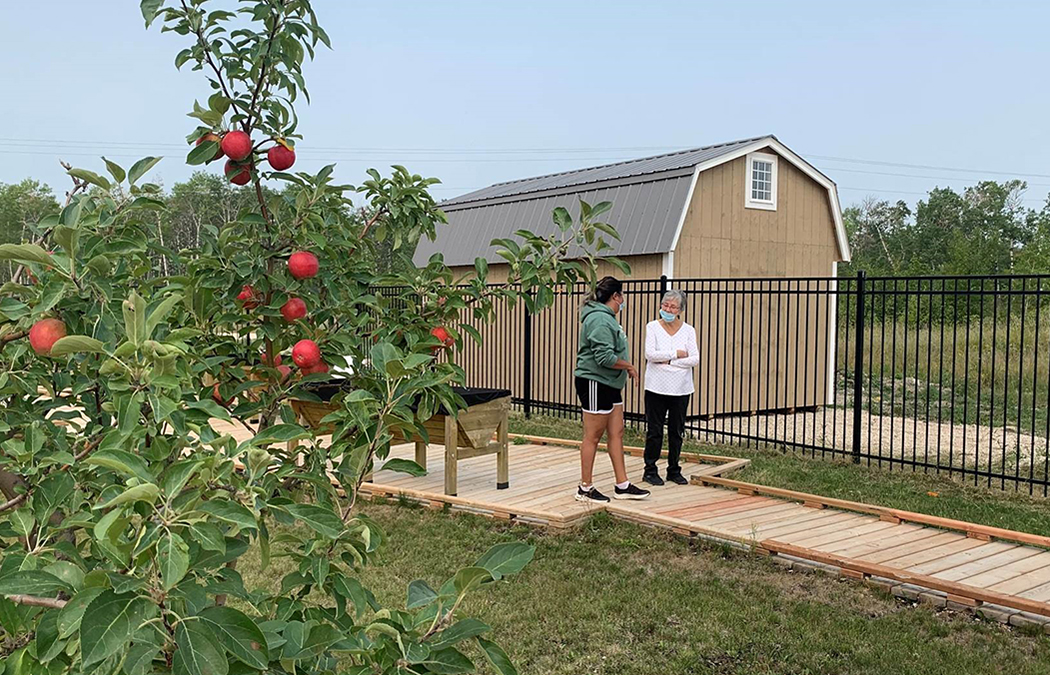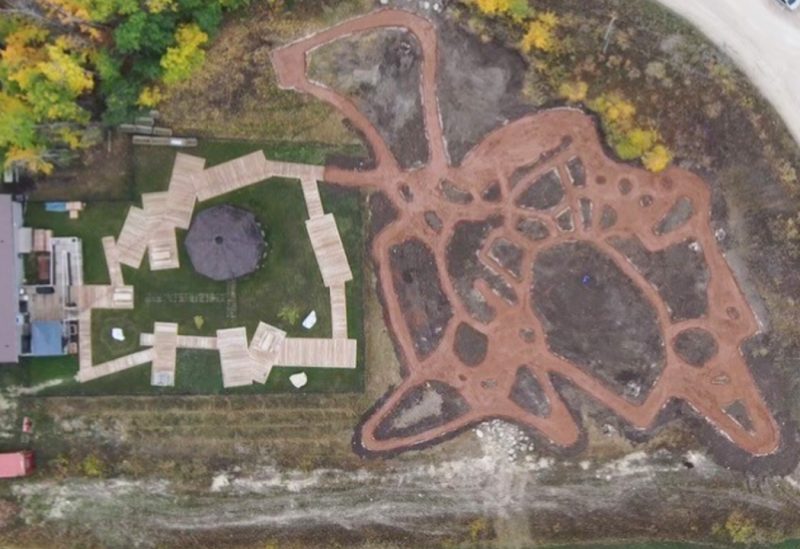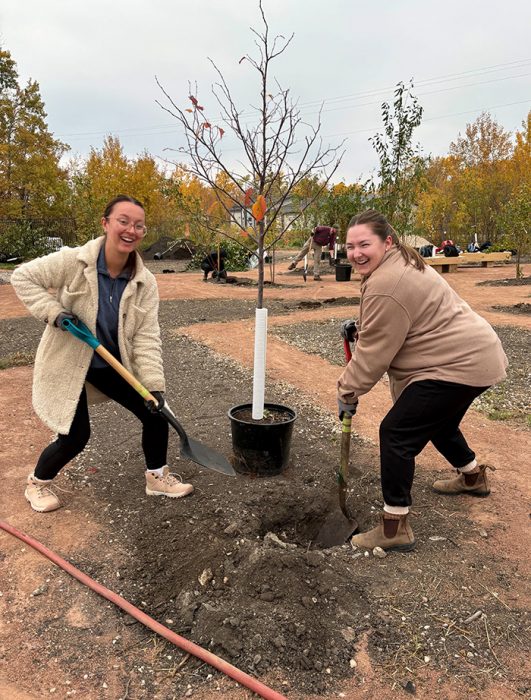
Occupational therapy alum and current PhD student Corrine Clyne speaks with an elder on the boardwalk at Lake Manitoba First Nation in 2021.
Trail brings physical, spiritual and mental health to elders in First Nation community
An elder wellness project at Lake Manitoba First Nation done in partnership with the College of Rehabilitation Sciences will mark five years this spring, with continued work on an intergenerational walking path.
In 2020, the community identified physical health for older adults as one of its top priorities at a retreat hosted by the college as part of its Kiga mamo anokimin onji minoayawin initiative – a partnership between the college and several First Nations communities to develop services for the communities based on their self-identified needs.
That summer, the project secured funding from the Canadian Frailty Network and the RBC Experiential Learning Travel initiative. Two occupational therapy students on an advanced fieldwork placement interviewed elders and community health-care providers to find out how they would like to see physical health supported, and a walking space for young and old was identified.
The following year, a holistic walking and fall prevention program for elders was developed by students in the physical and occupational therapy programs.

An aerial view of the Shared Path trail and boardwalk at Lake Manitoba First Nation.
“Since it was during the pandemic, all the programming occurred outside,” said Cara Brown, associate professor of occupational therapy and the college’s project lead. “The community’s local Jordan’s Principle program allowed the group to use the boardwalk outside its facility.”
Ground broke on the Shared Path trail in 2023. Designed by Dietmar Straub and Anna Thurmayr, landscape architecture professors from UM’s Faculty of Architecture, the trail is made of the same material used for running tracks and baseball fields. It connects to the Jordan’s Principle boardwalk, which they also designed.
Connecting the trail to the boardwalk creates a welcoming space for physical exercises and spiritual and mental growth for community members of all ages, said Lawrence West, health director at Lake Manitoba Health Centre and project lead for the community.
“We wanted someplace safe for our Elders to walk, because walking is one of the best things you can do for your overall health. And it’s not just an oval track. There are lot of twists and turns through this natural space,” West said.
He said the community enjoyed working with the students, who brought a fresh perspective and “out-of-the-box” thinking.
“It’s a knowledge transfer, which is very important for us. Our elders teach the students, but also learn from them at the same time.”
After the path was completed last summer, 13 students from architecture, occupational therapy (OT) and the Max Rady College of Medicine planted 428 trees and shrubs around the path.

(L to R) Occupational therapy students Alyssa Wright and Celeste Prescott.
“In our program, we talk a lot about the need for OT in rural communities, but I haven’t been to many,” said first-year OT student Alyssa Wright, from Winnipeg, one of the students involved in the tree planting initiative.
“Getting to be a part of building something for this community – this beautiful area with so many diverse trees – gives a unique perspective on what is meaningful to different people.”
Corrine Clyne, a PhD student in applied health sciences, spent six weeks working on the early stages of the project when she was a student in the occupational therapy program in 2021. Originally from Norway House First Nation, she said the experience has been beneficial in her practice, even though she is currently working mostly in pediatrics.
“We learned a lot of therapeutic skills, building relationships. The main thing was how to be a more culturally safe occupational therapist. A lot of that learning has transferred into my role,” Clyne said.
This spring, the development of the space will enter one of its final phases, the planting of natural grasses and medicines.
“This planting will add to other initiatives the community has been doing to bring more natural medicines and foods into their everyday lives,” Brown said.






